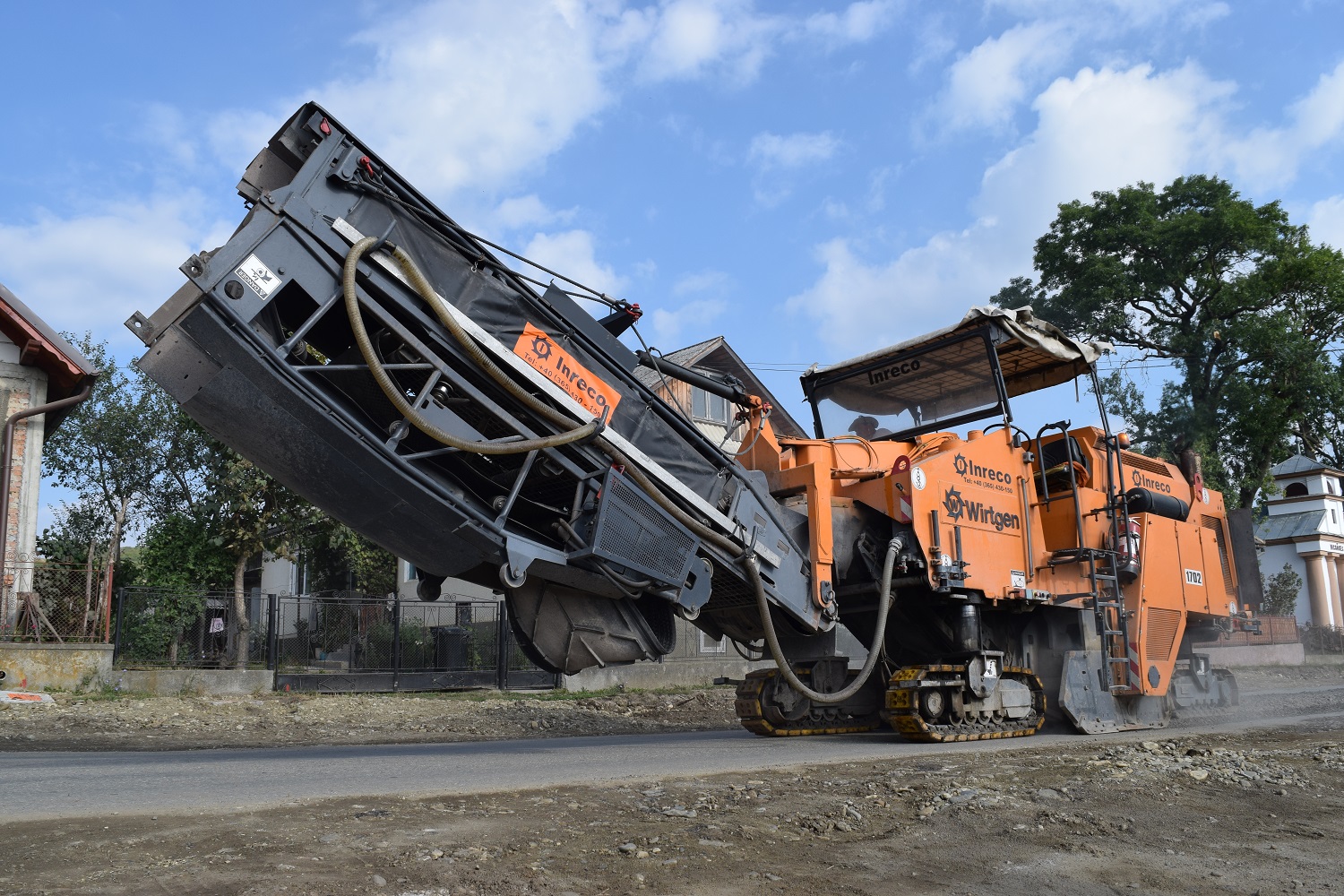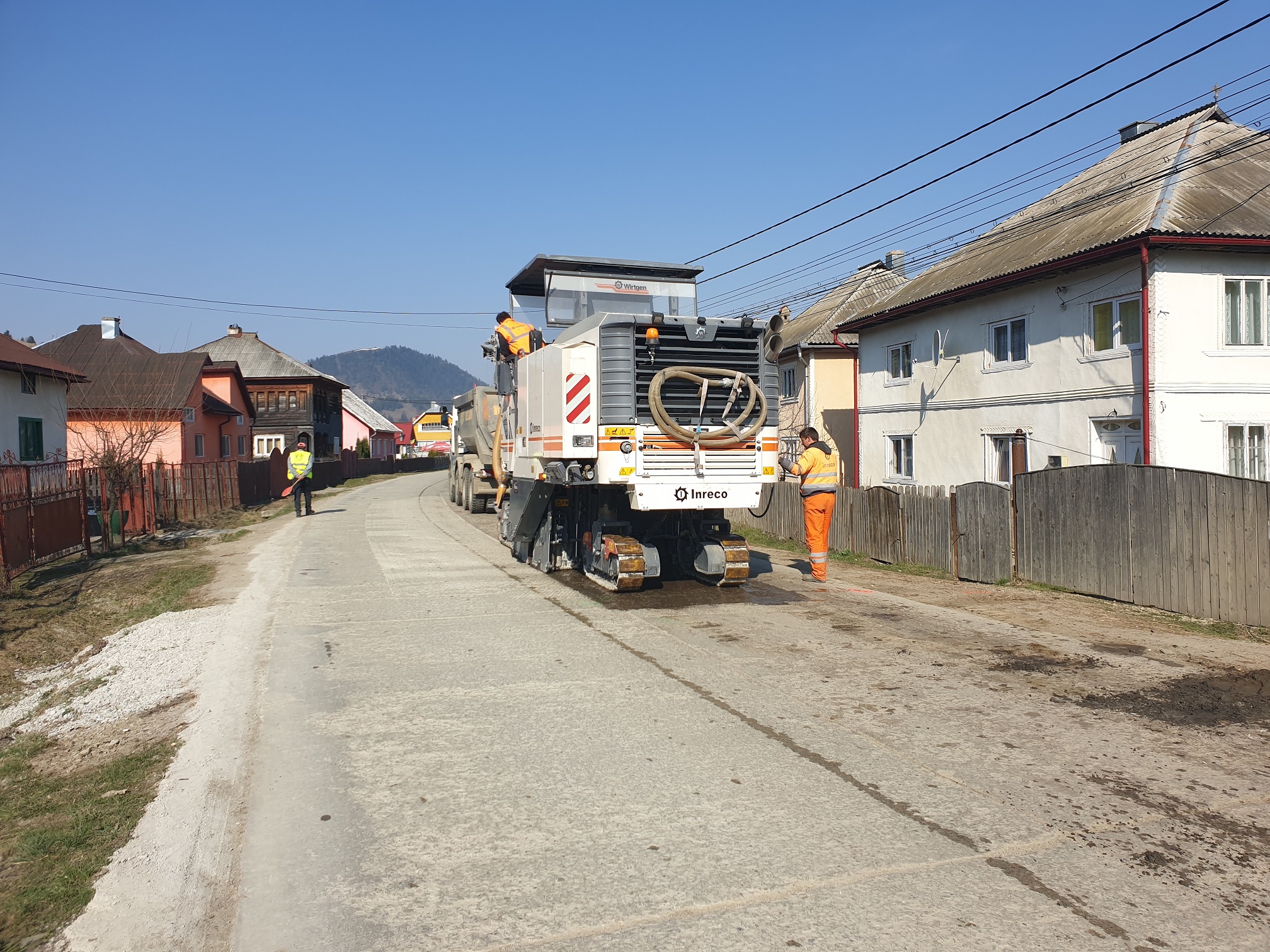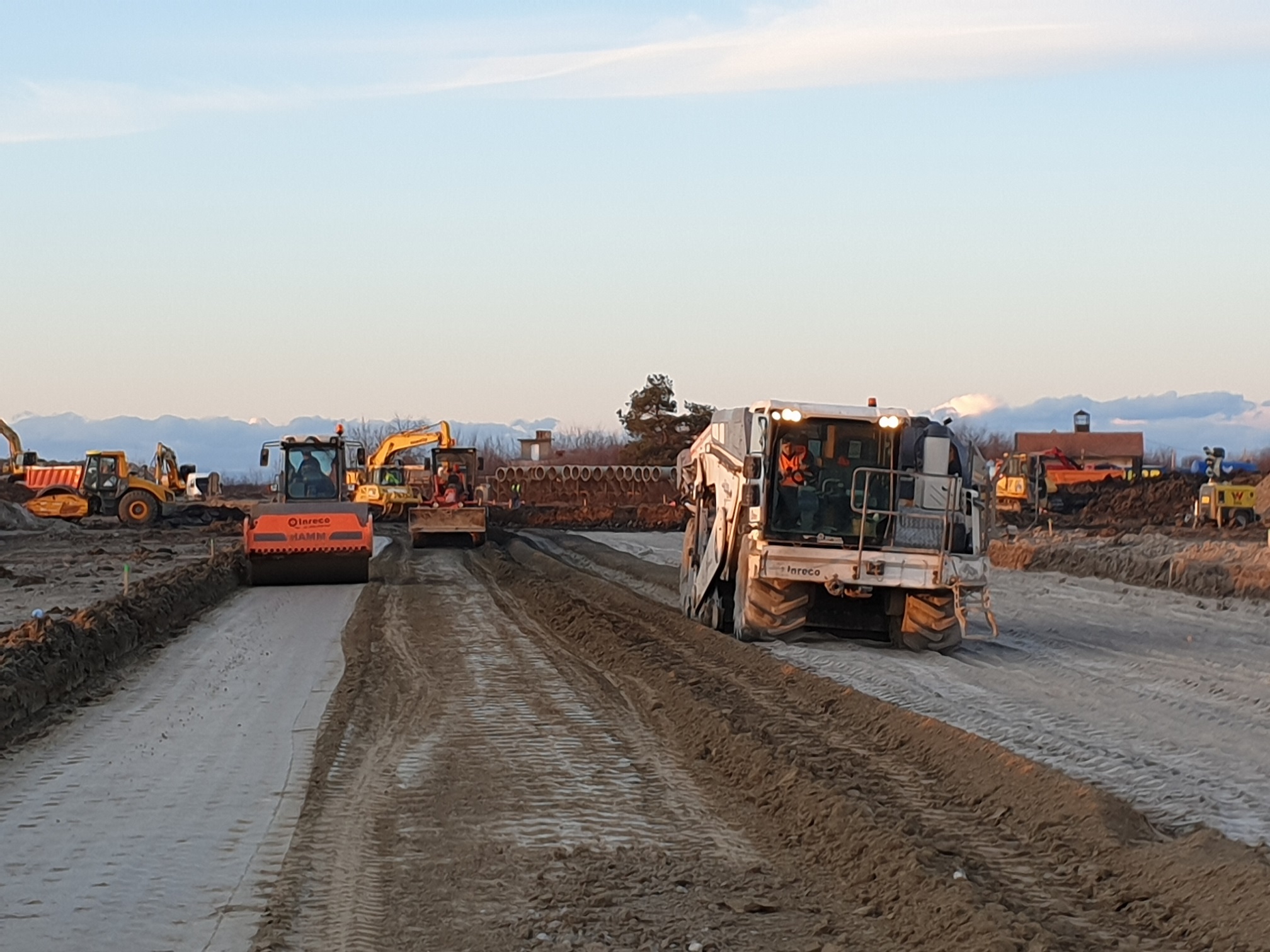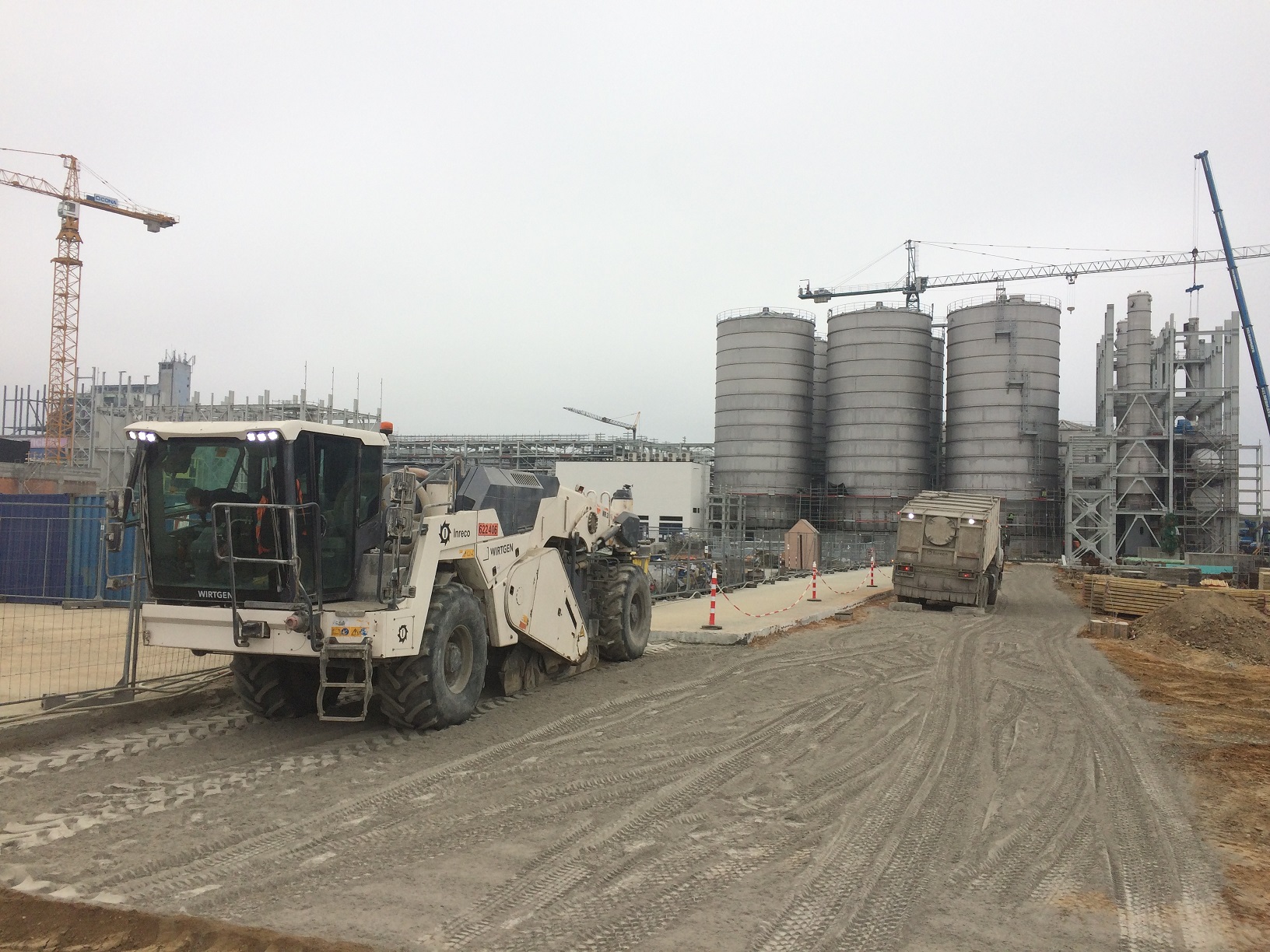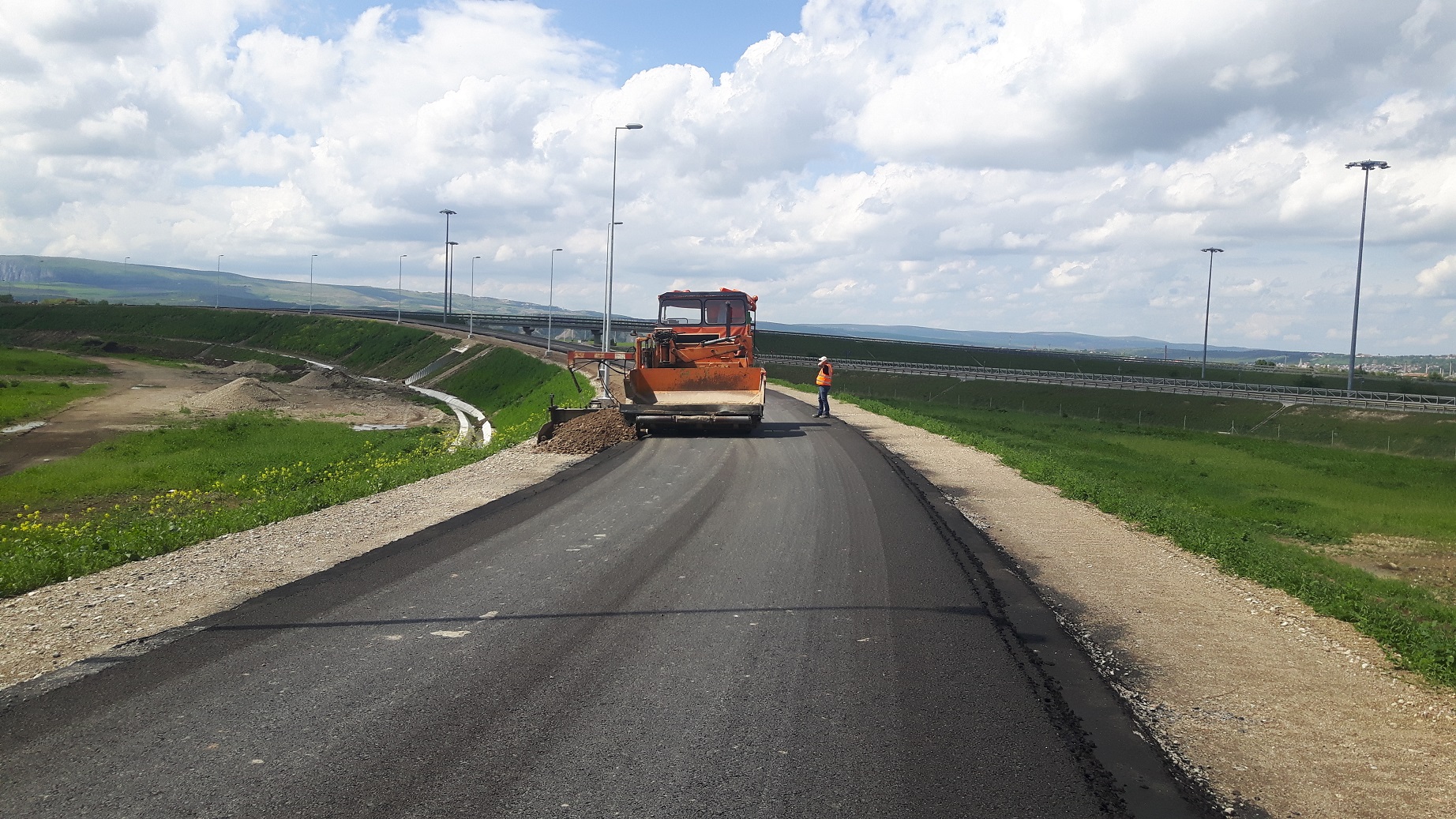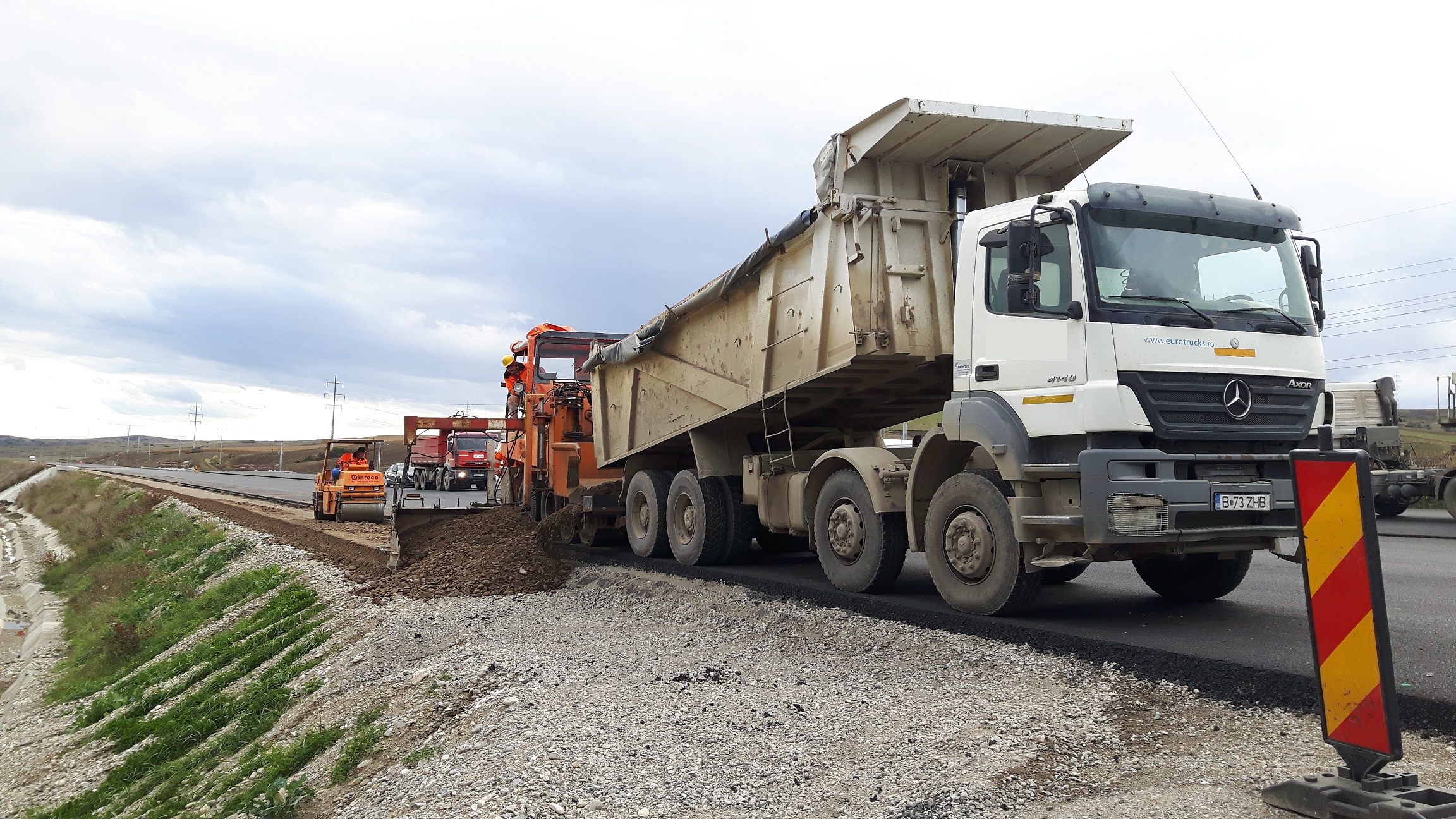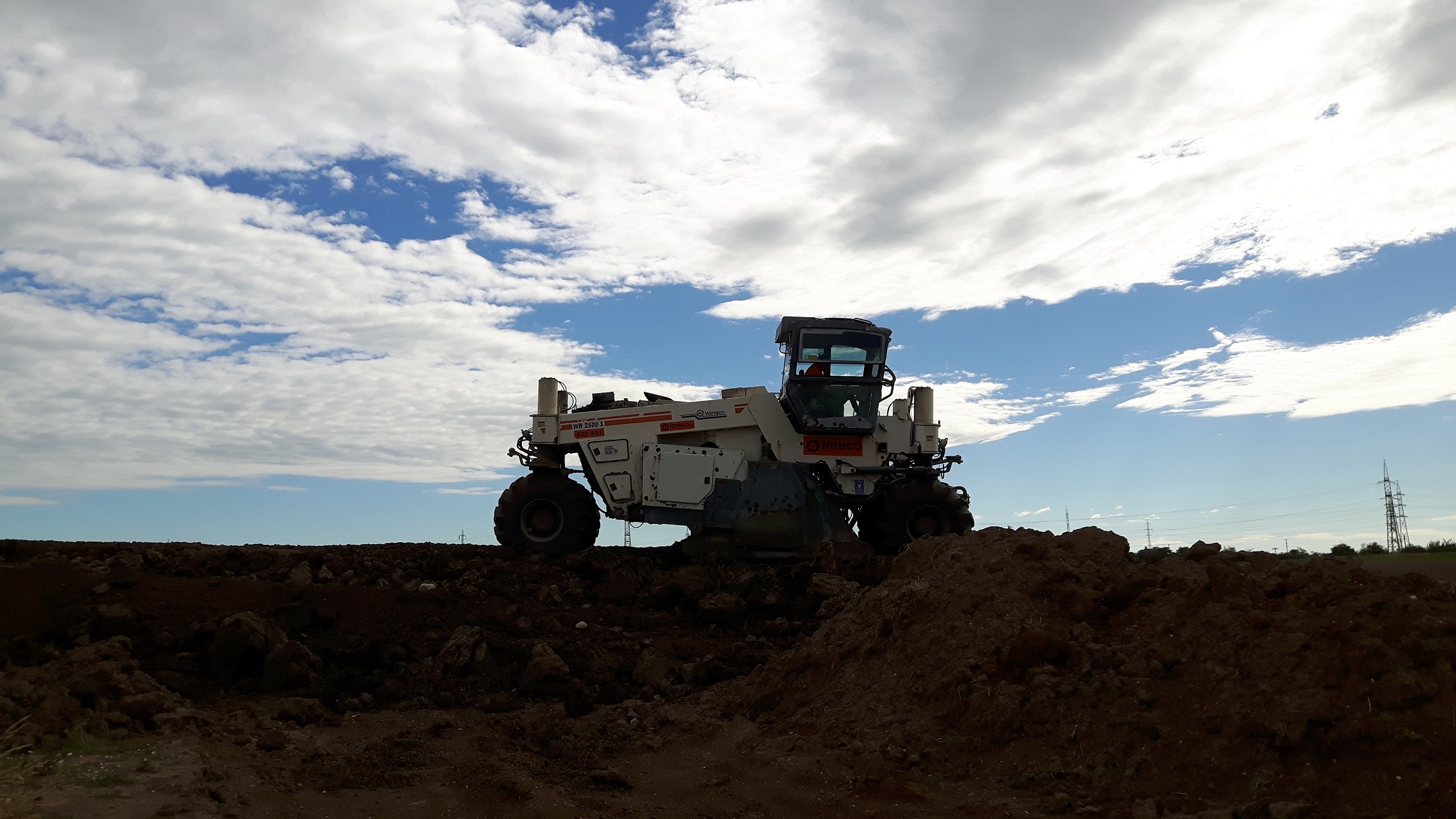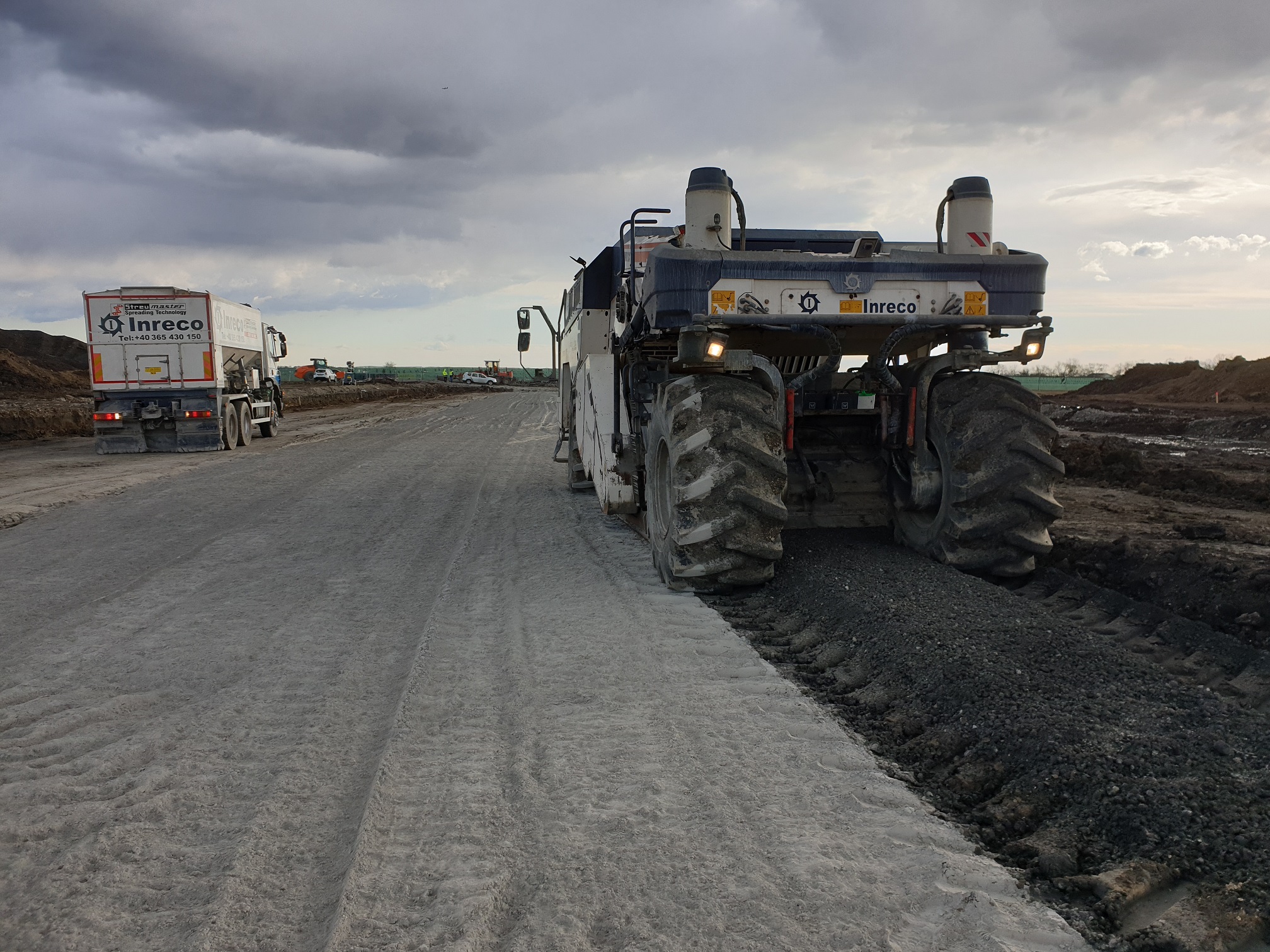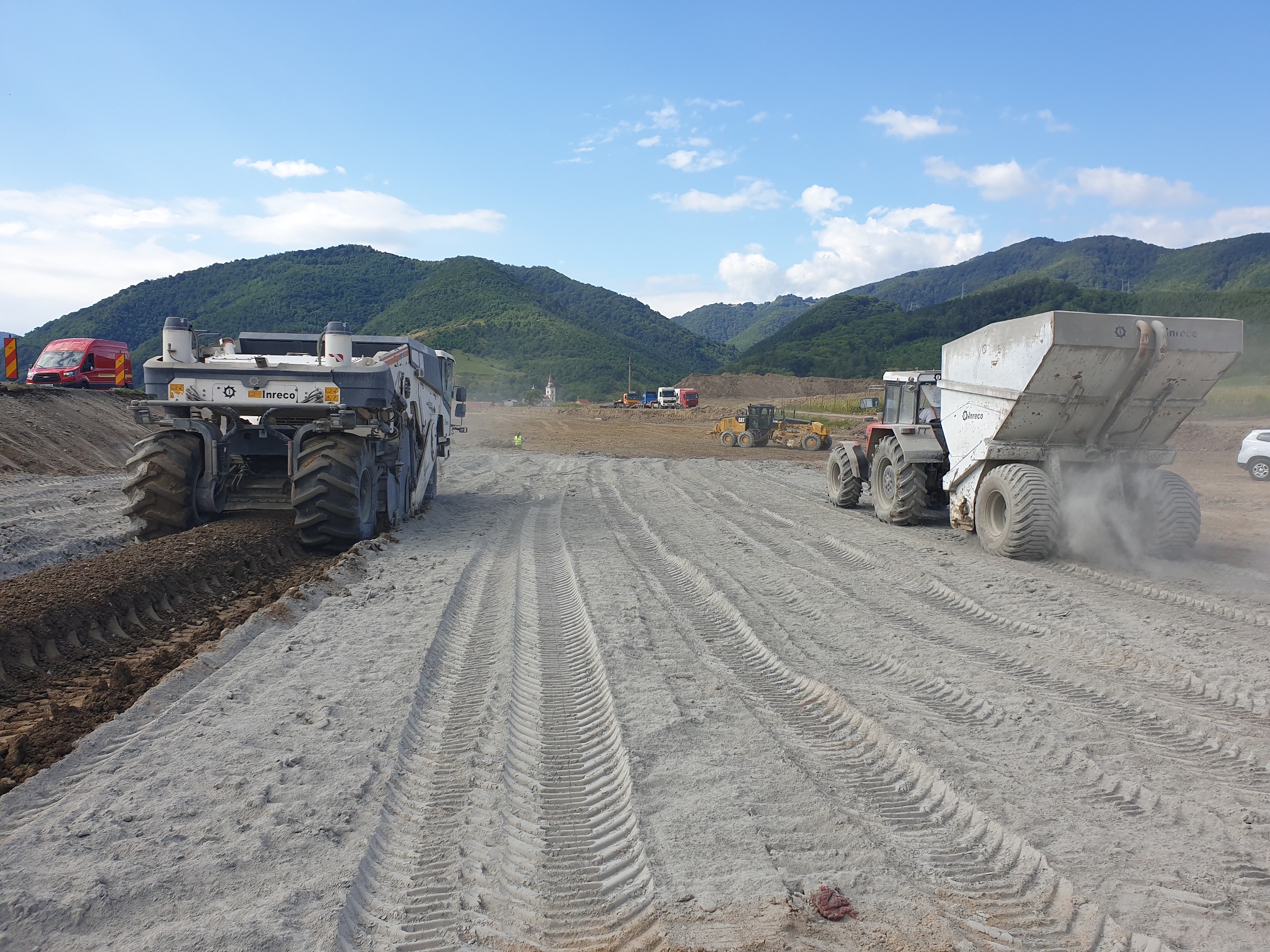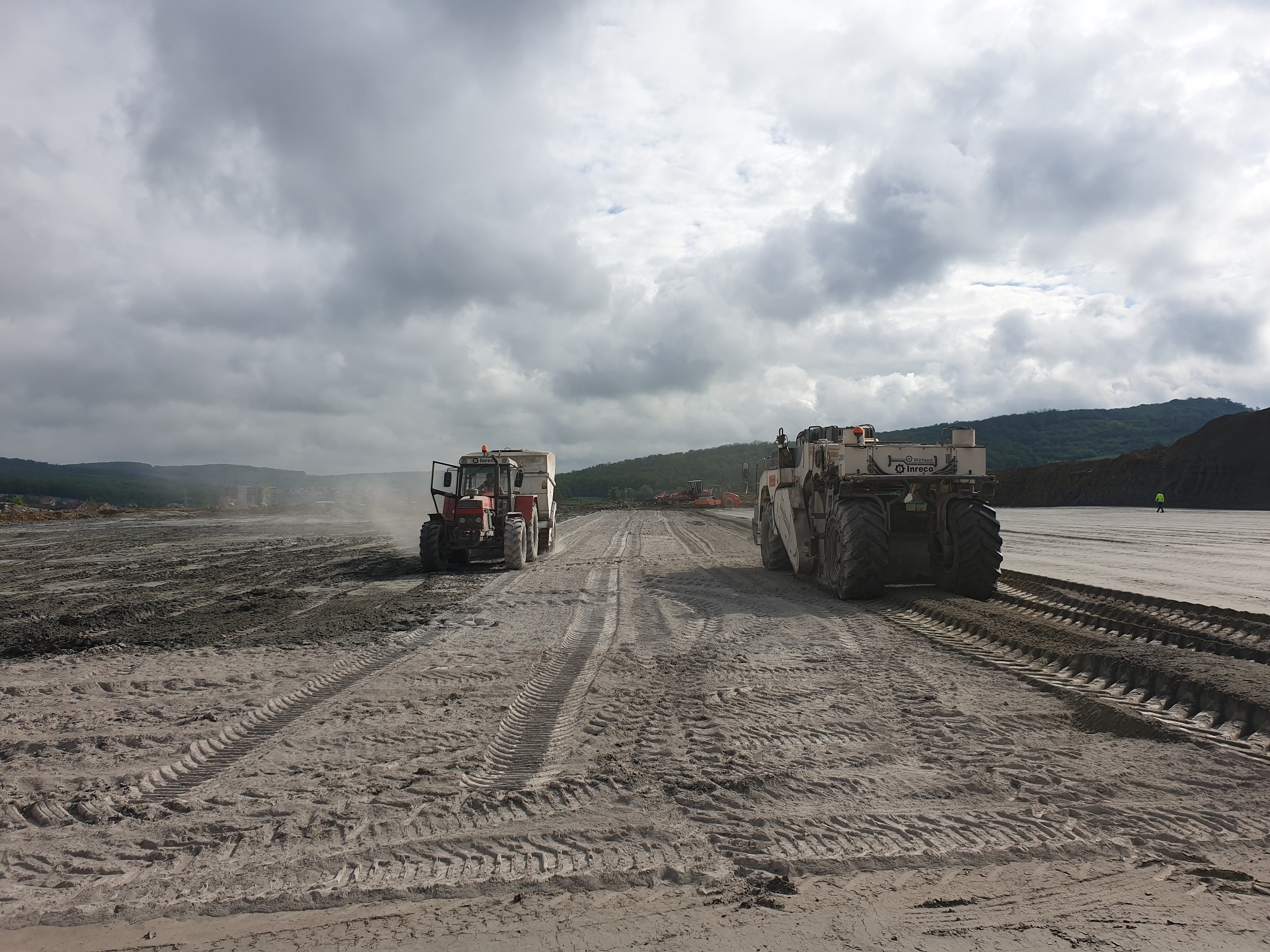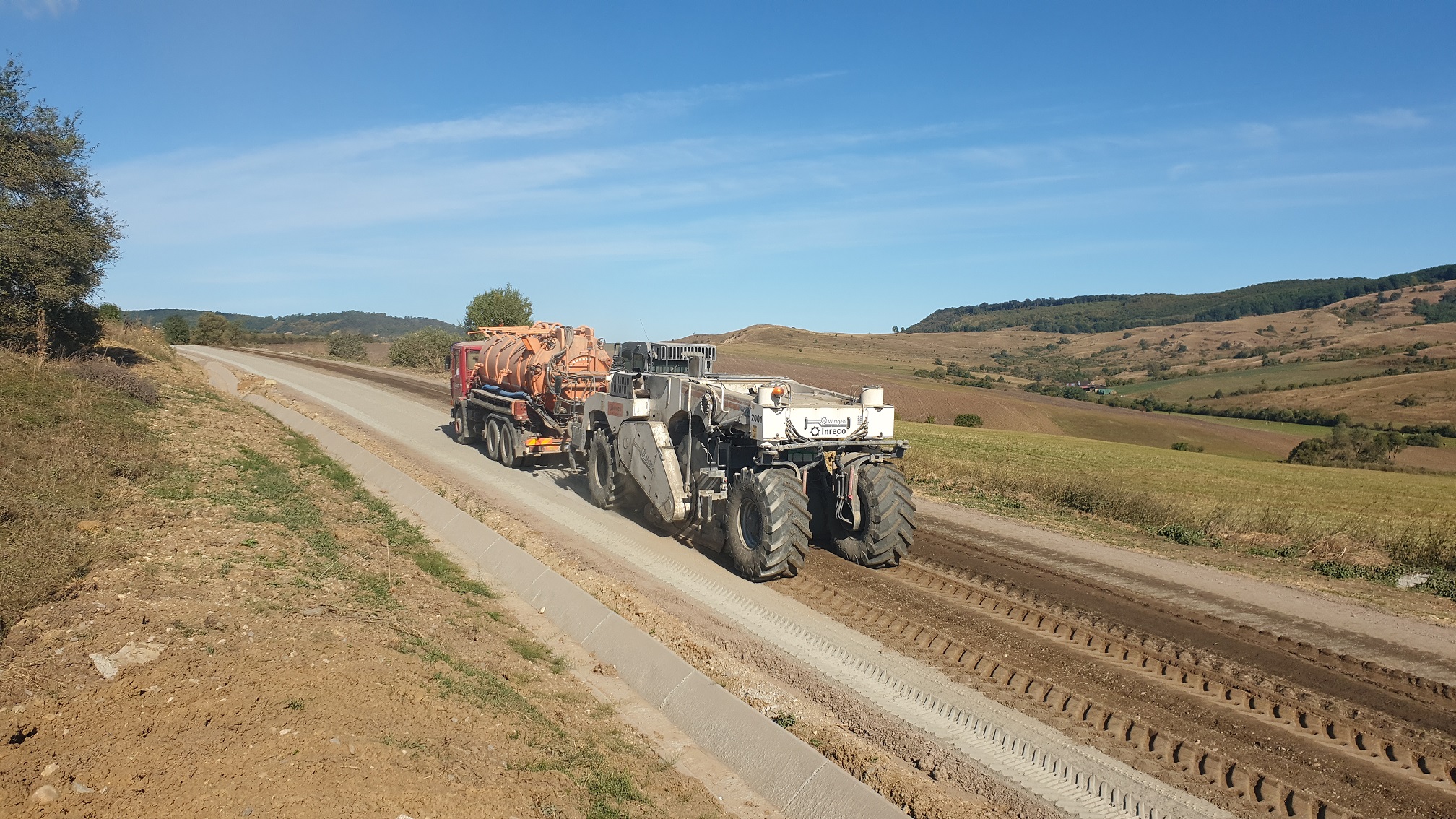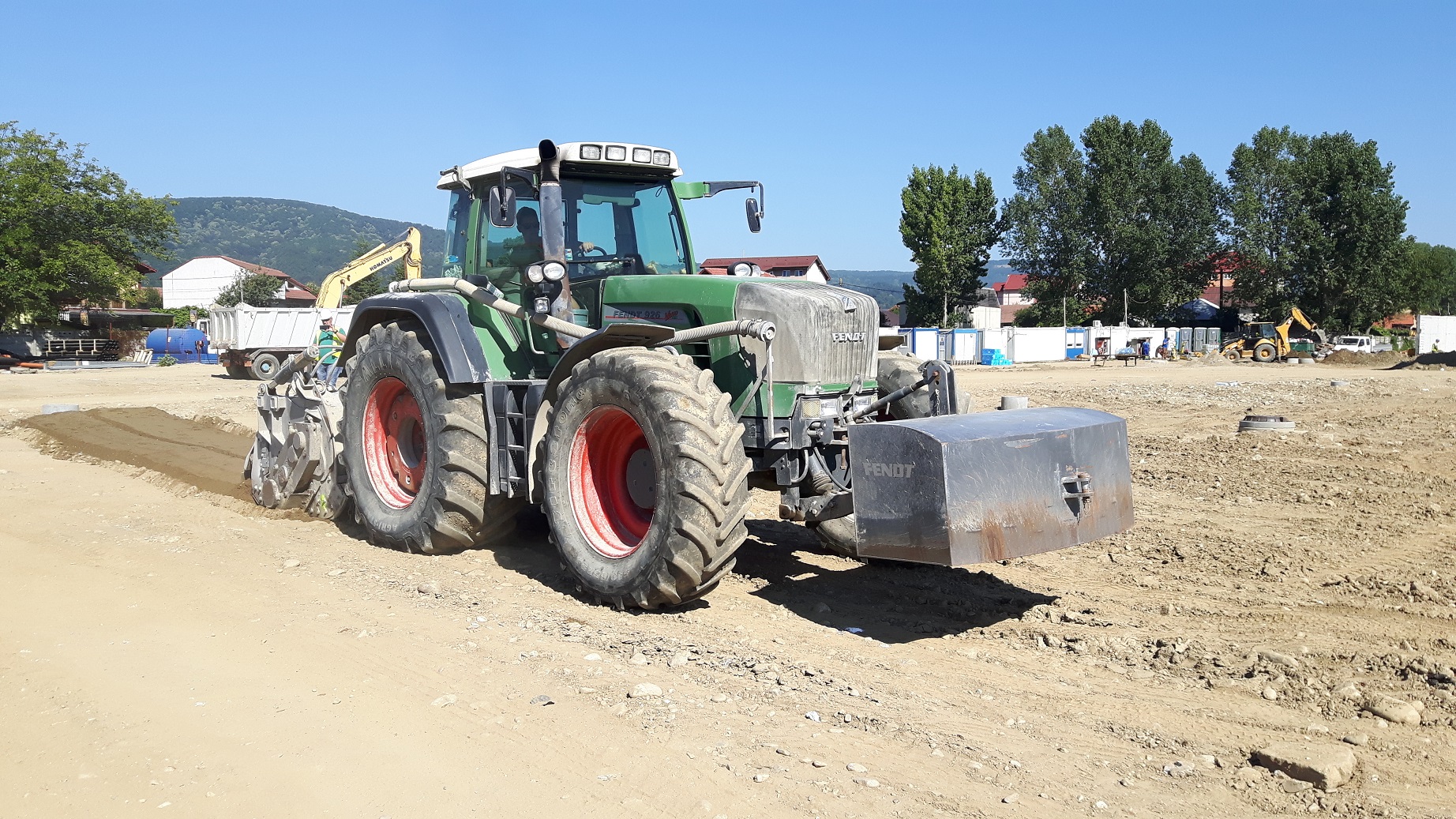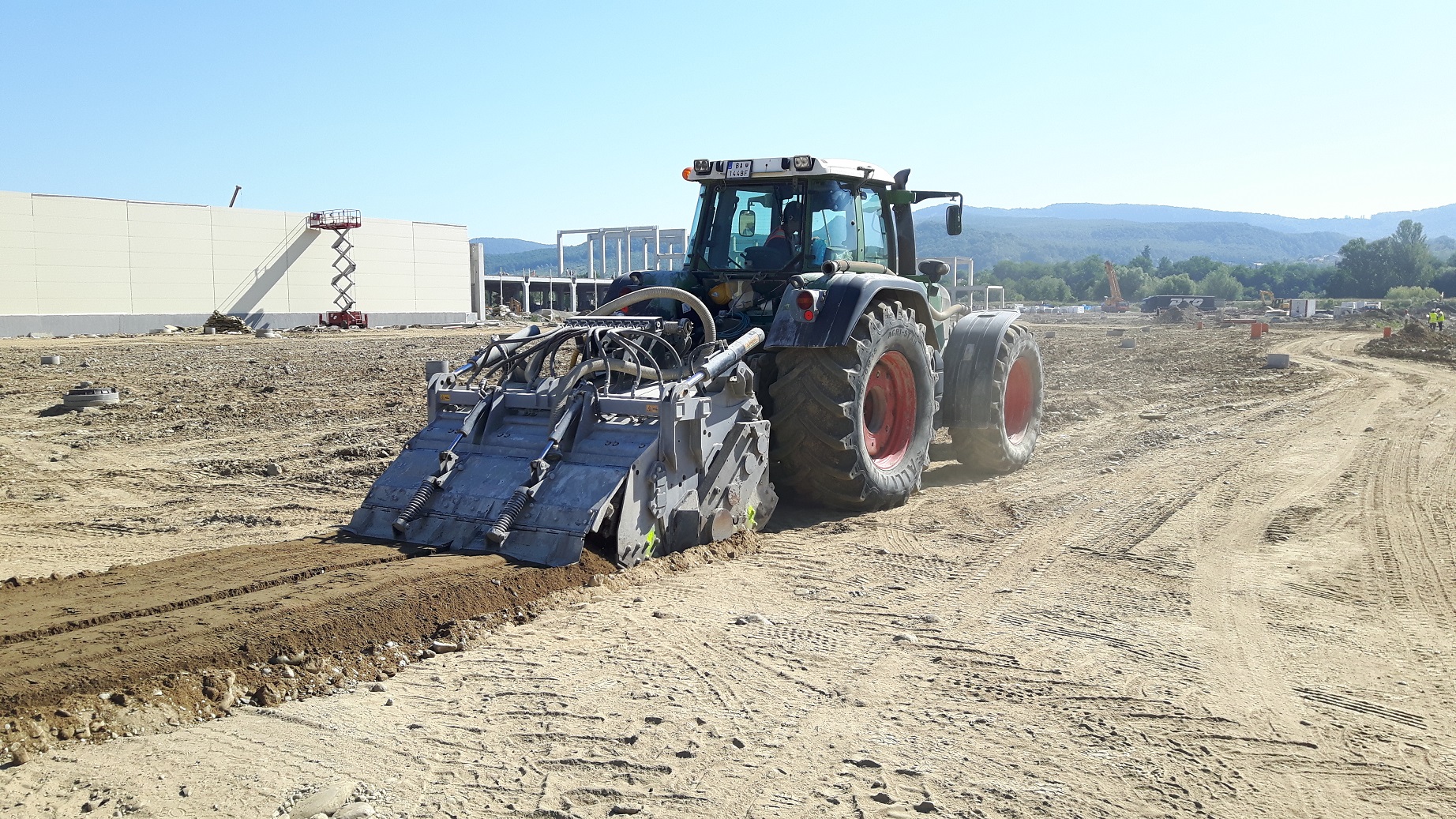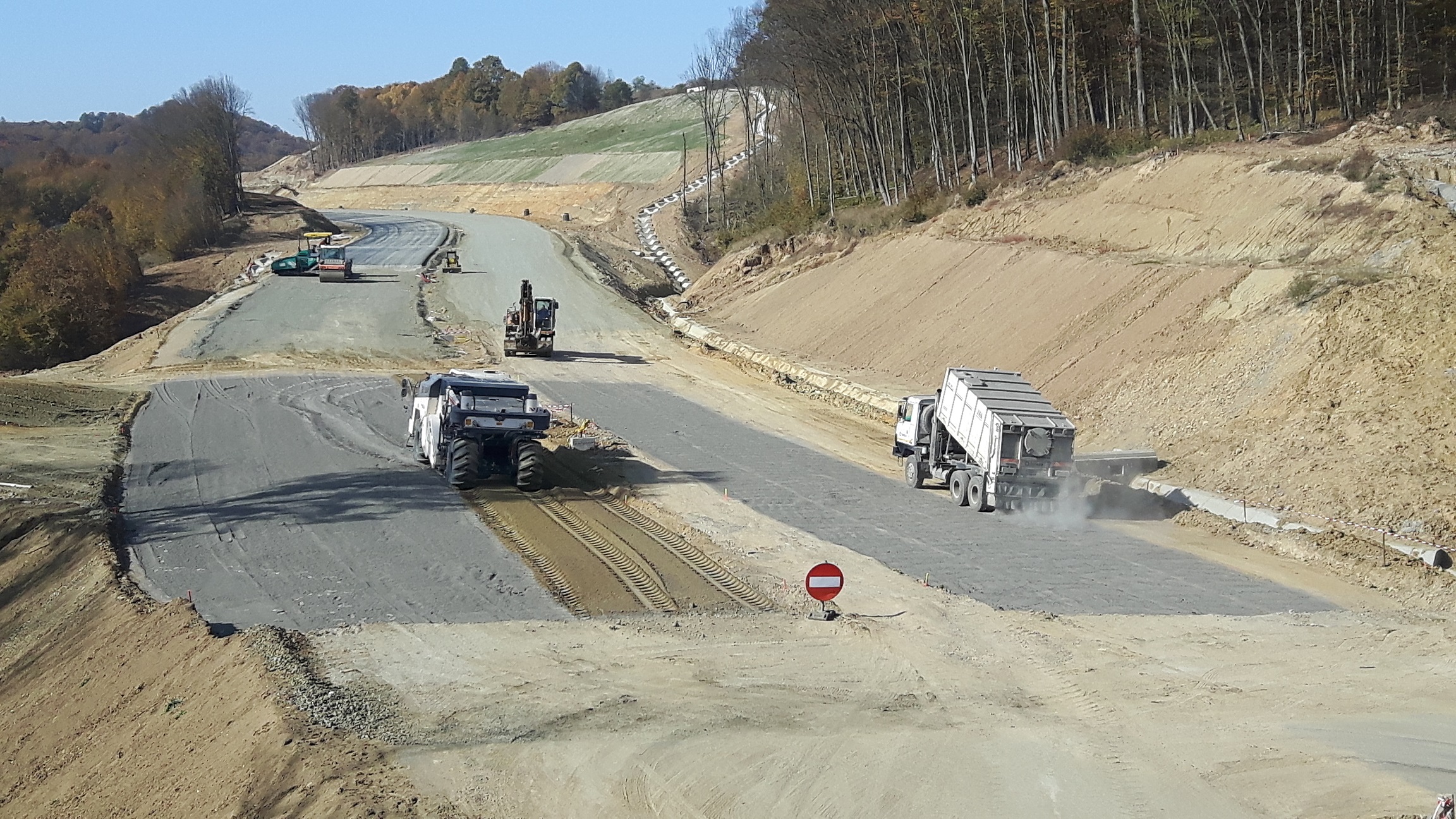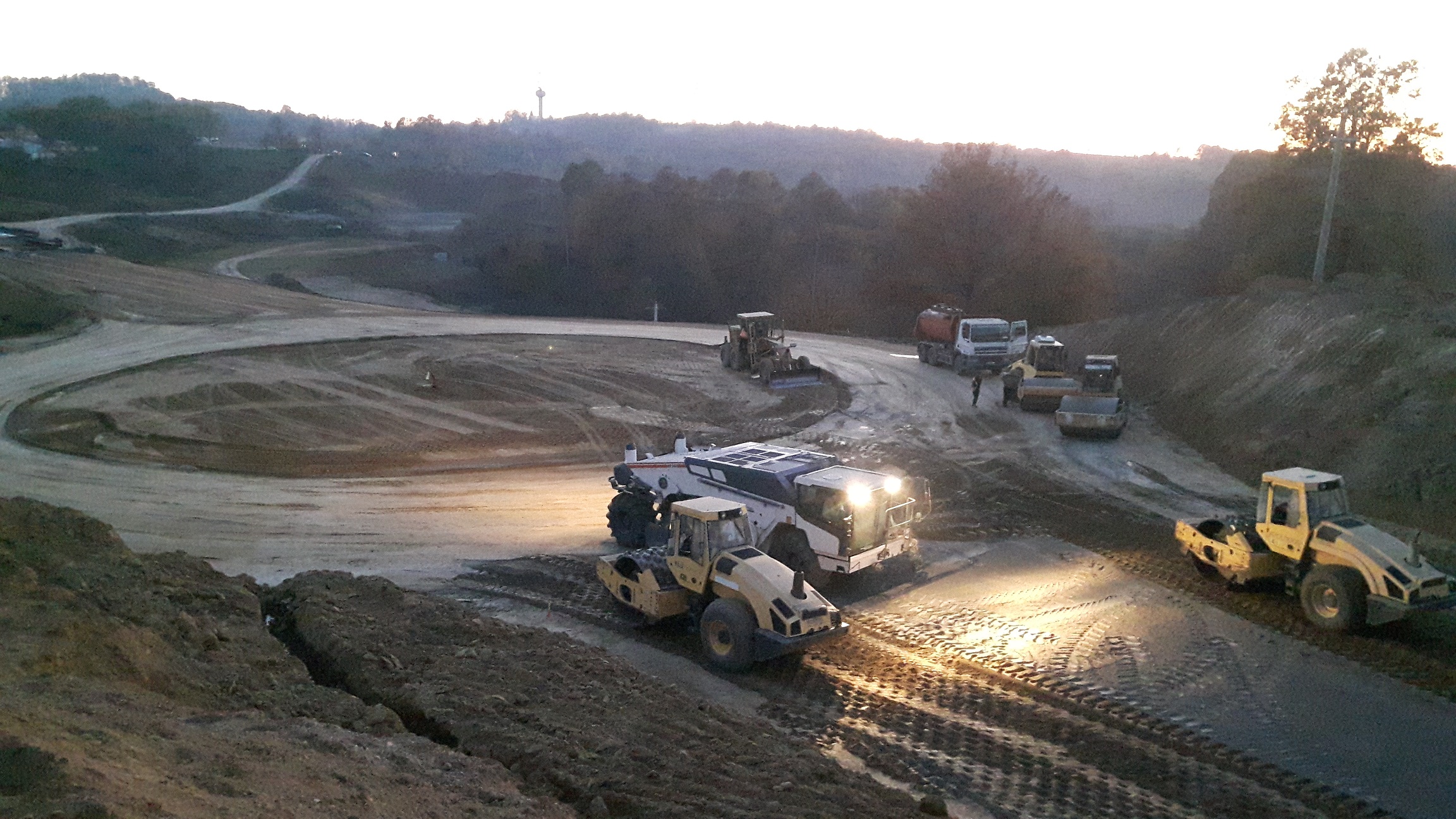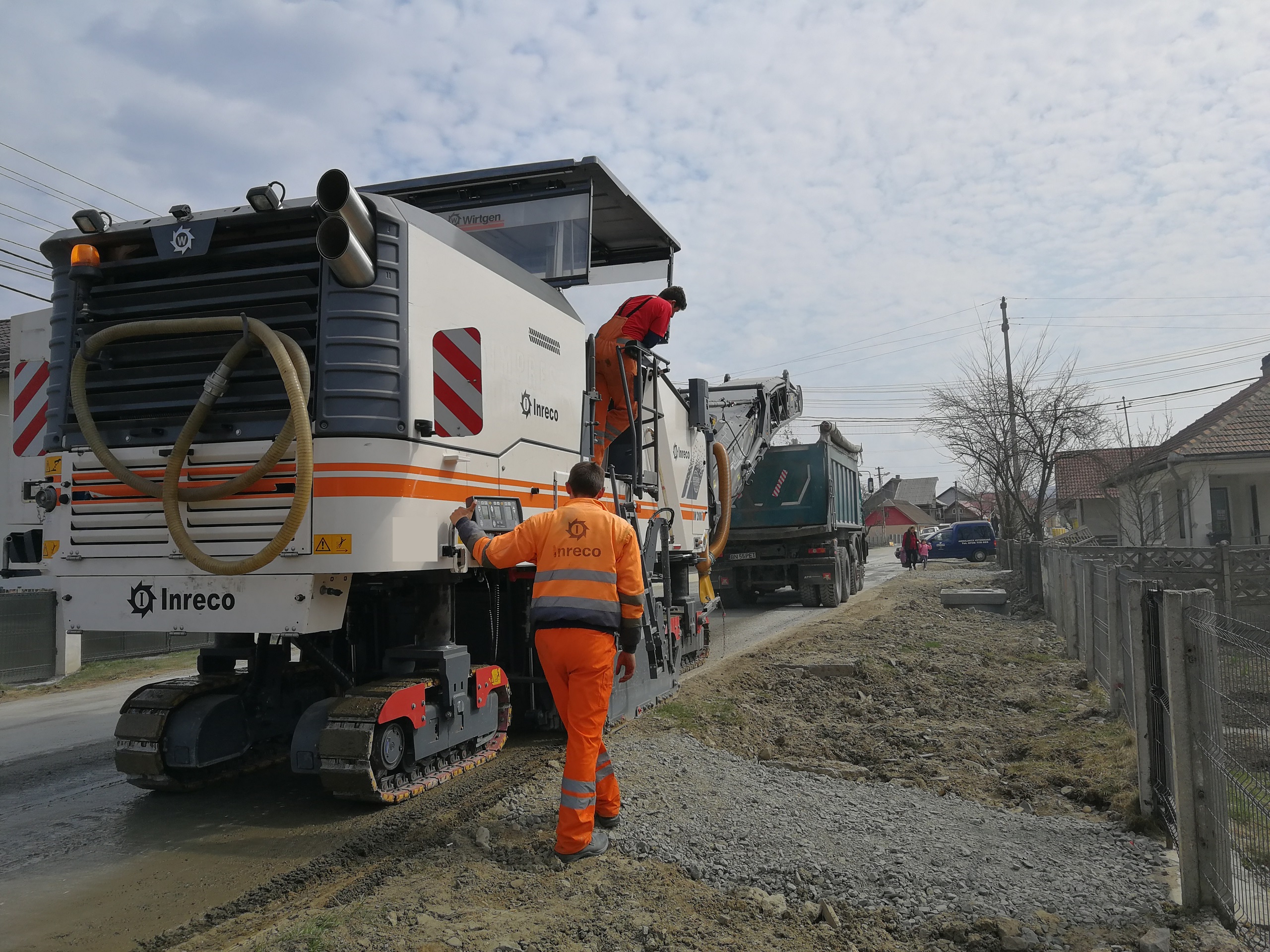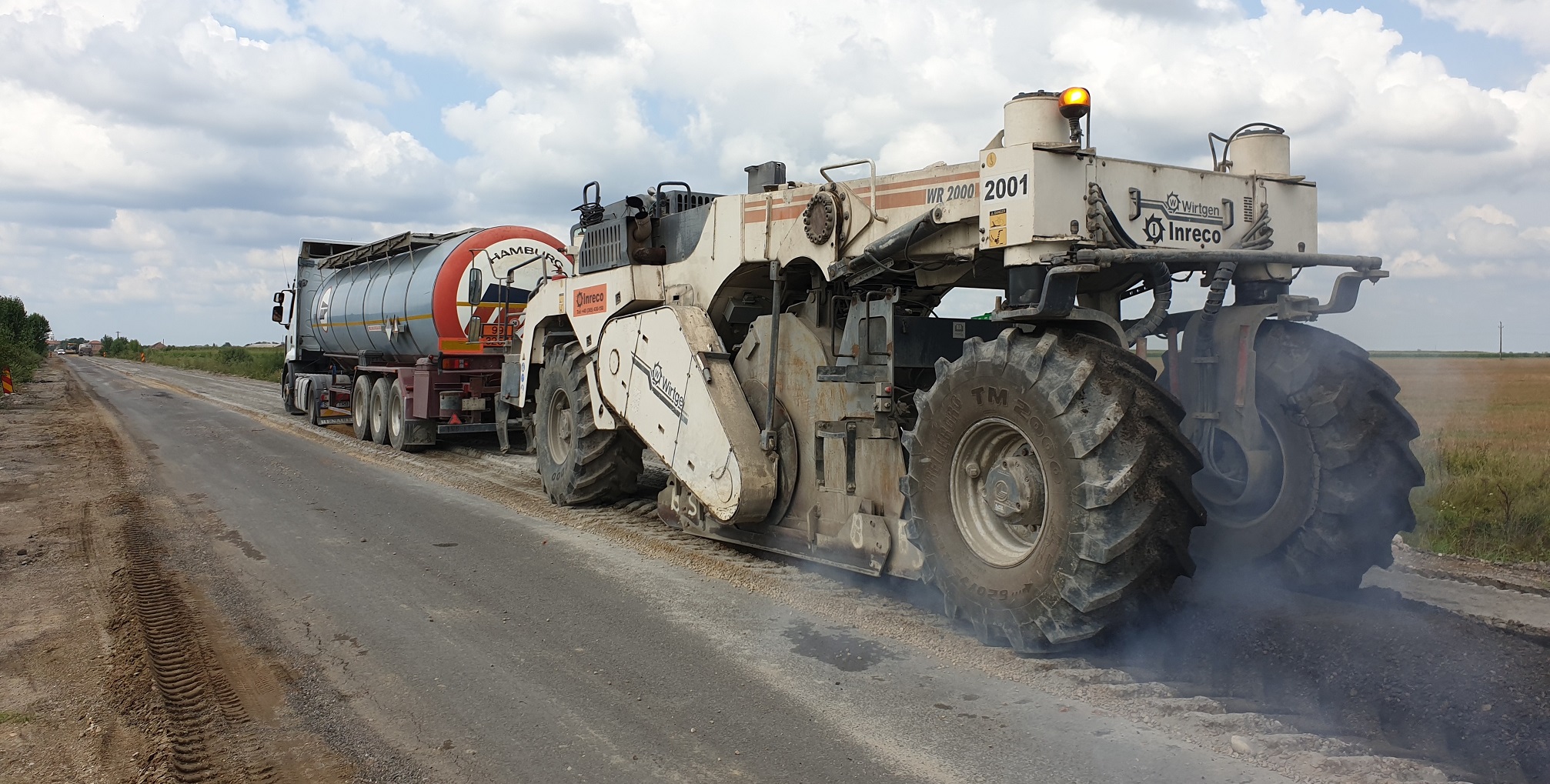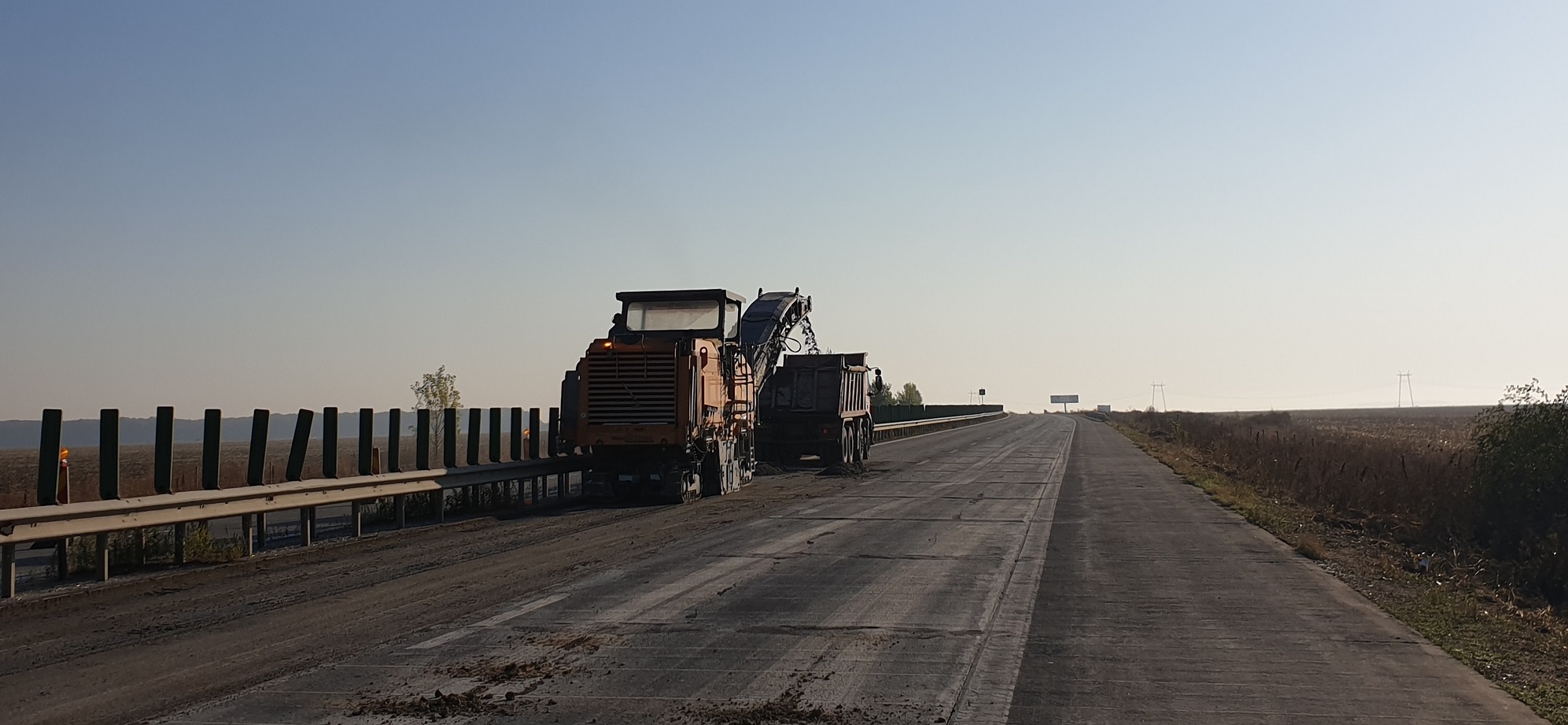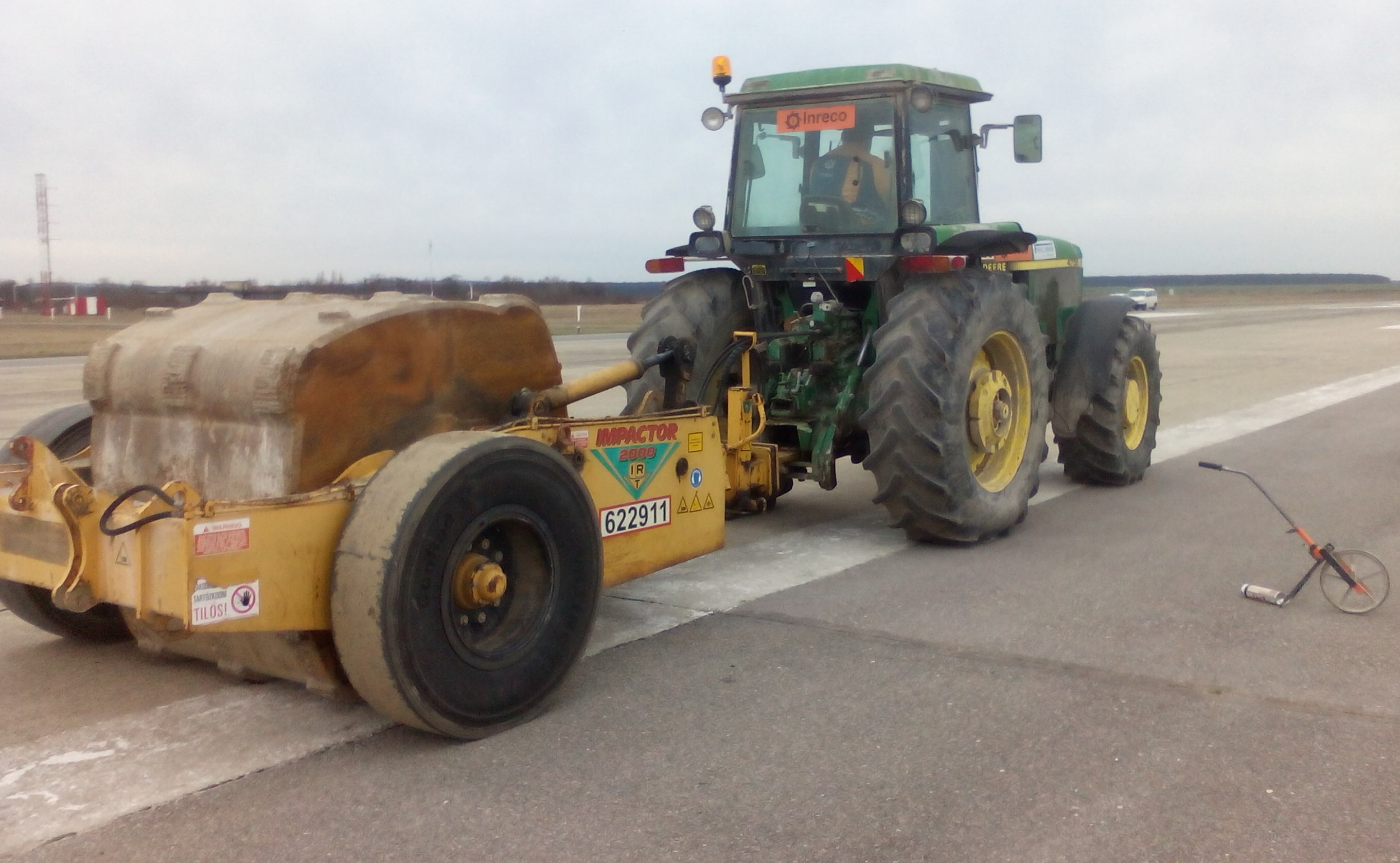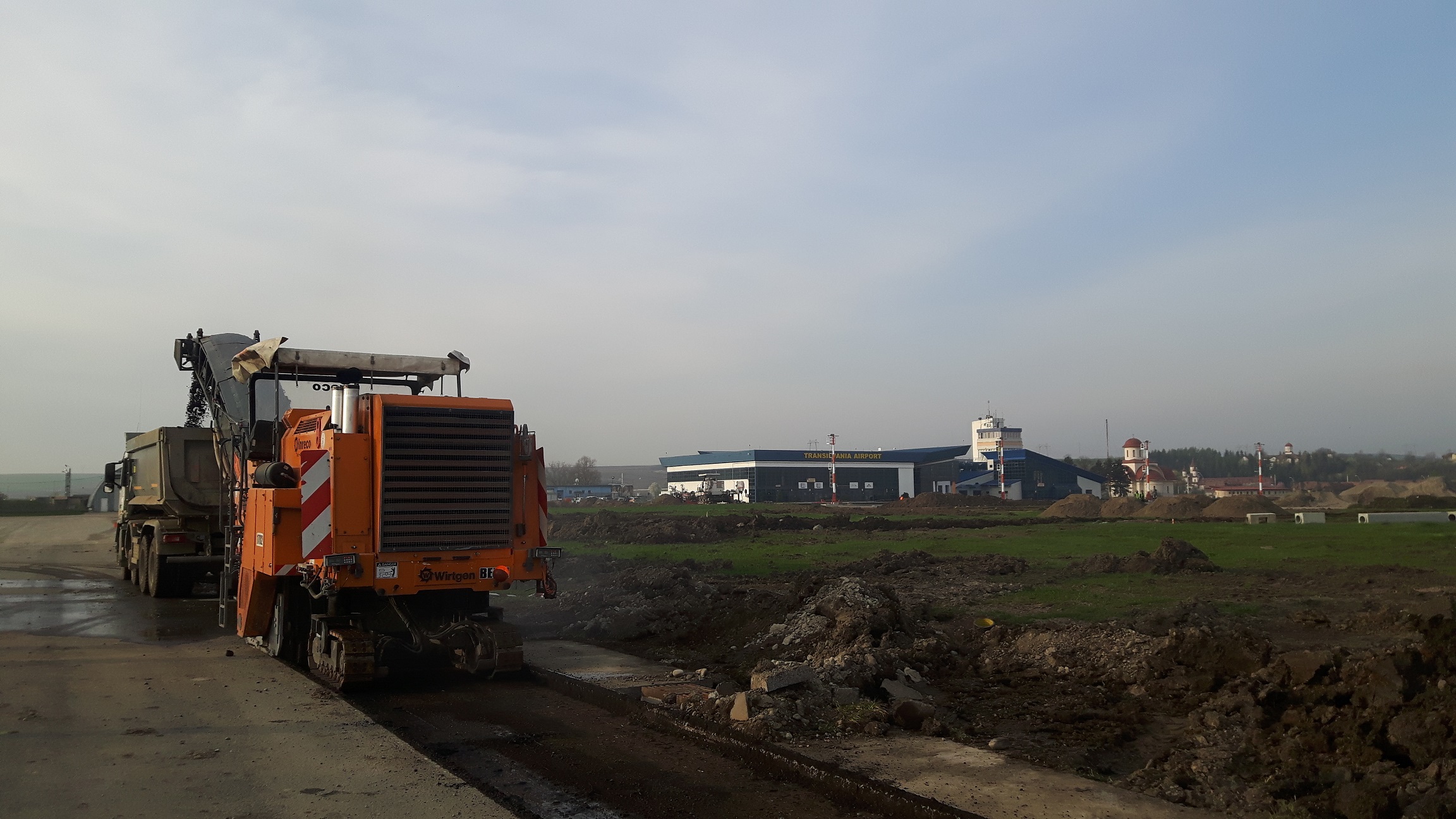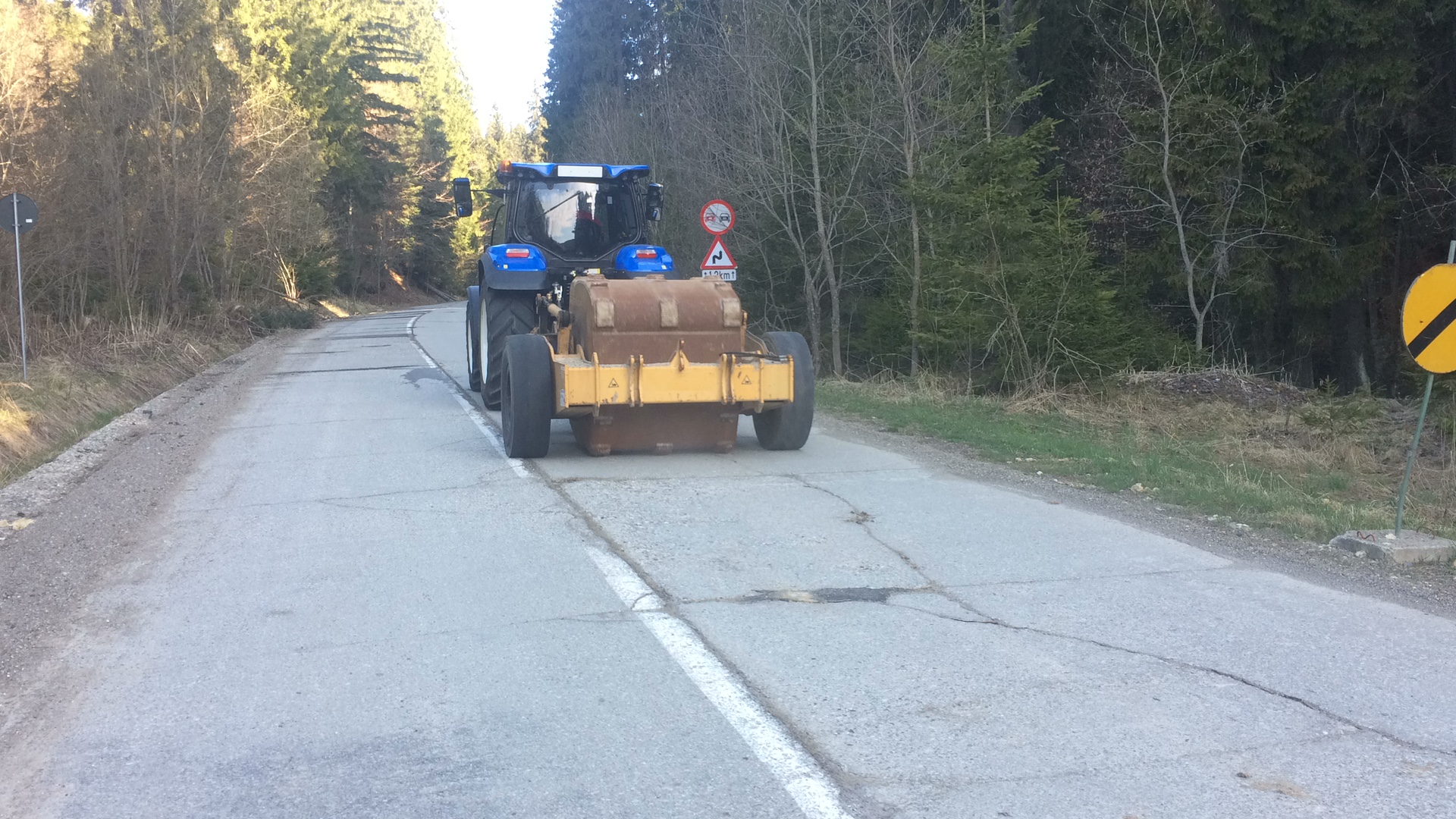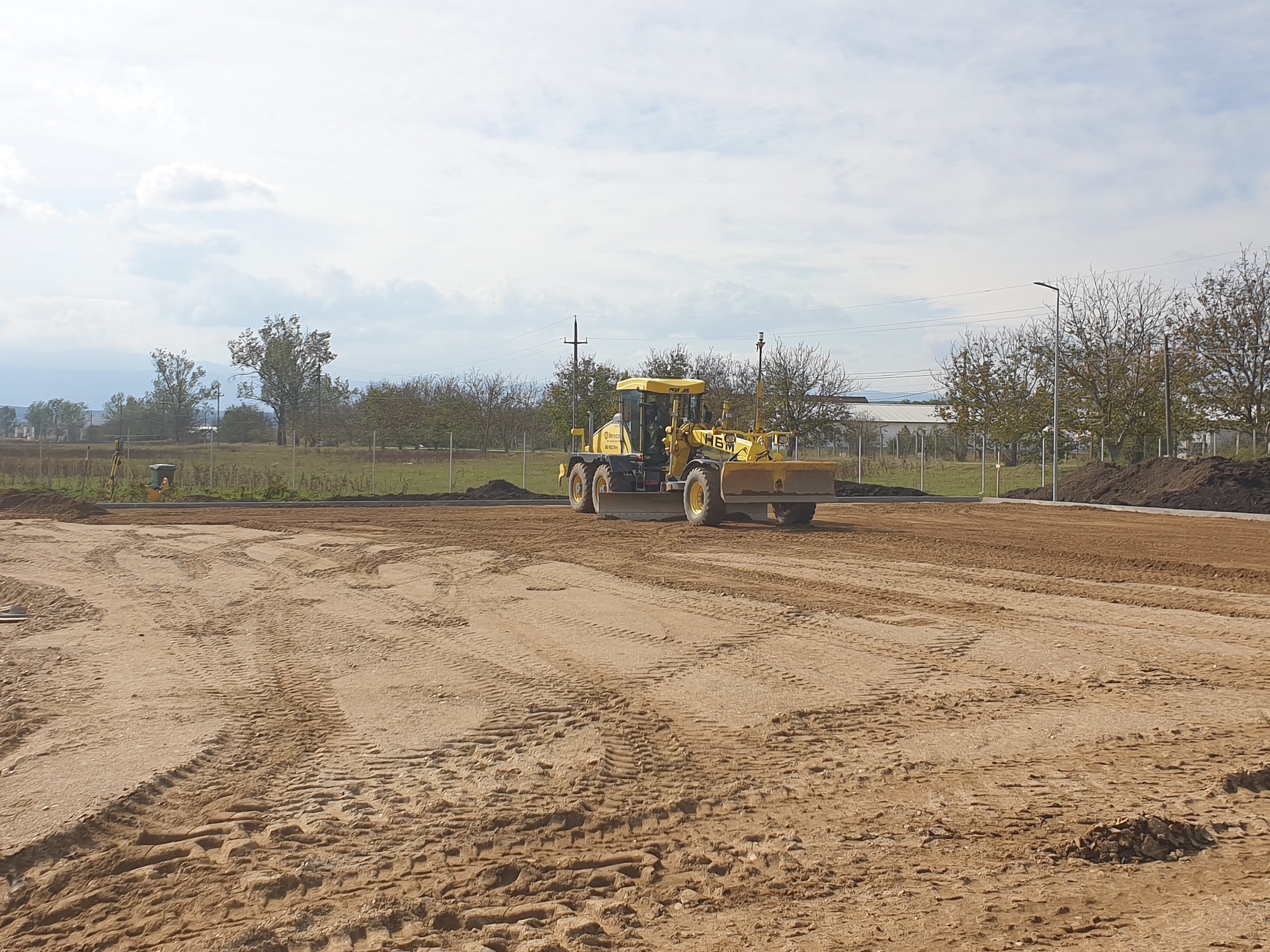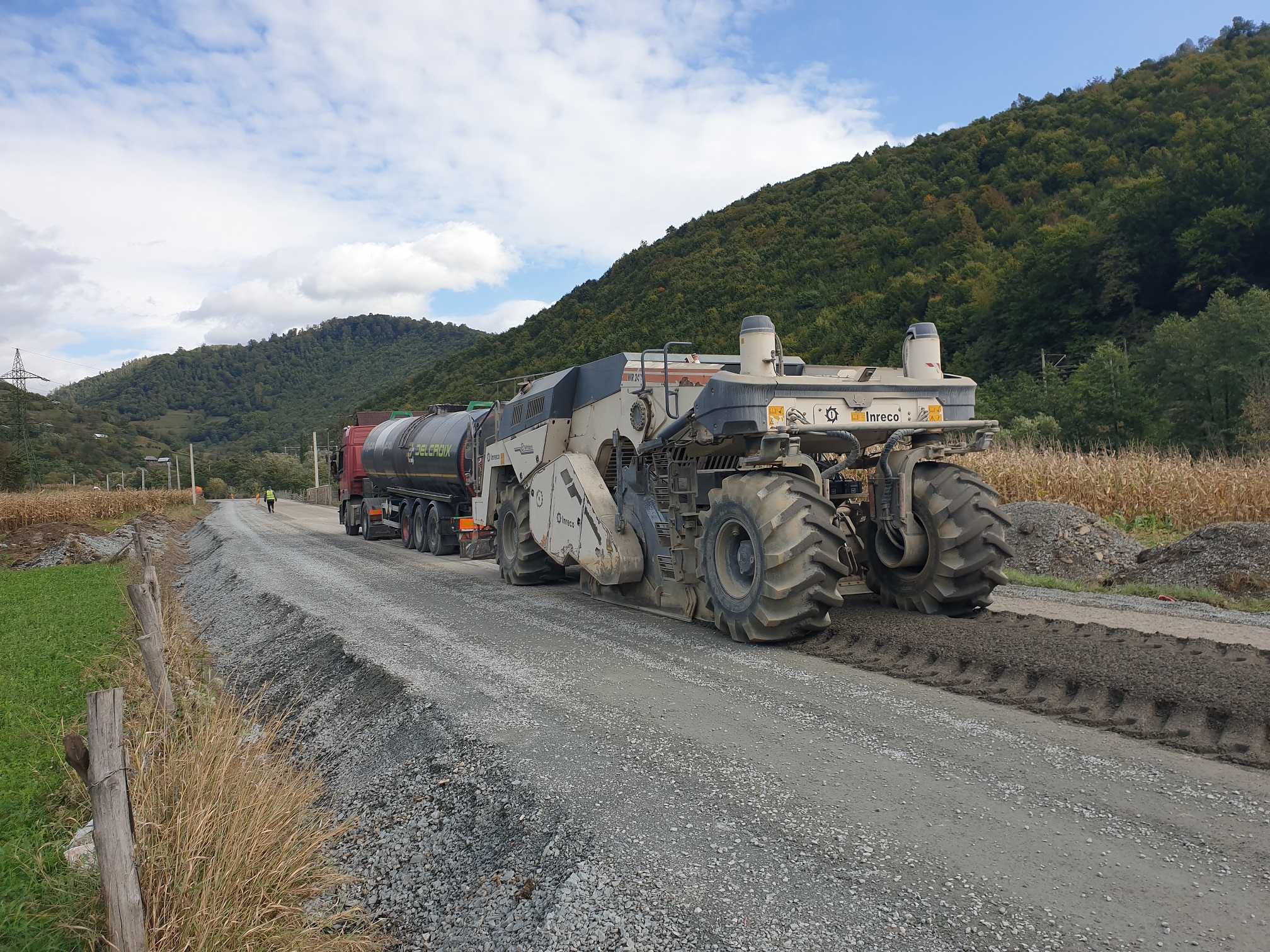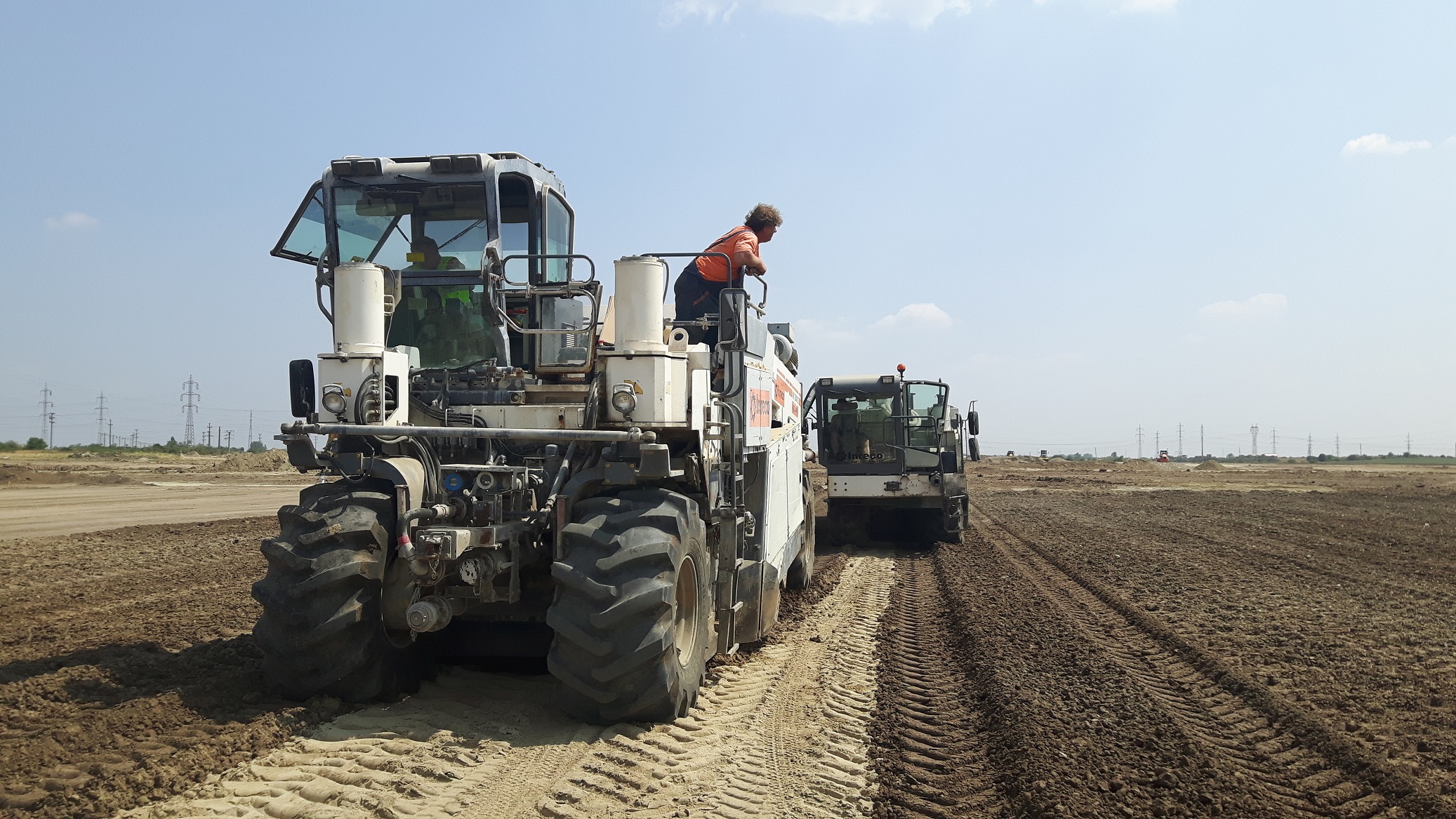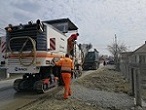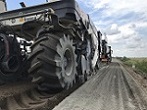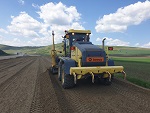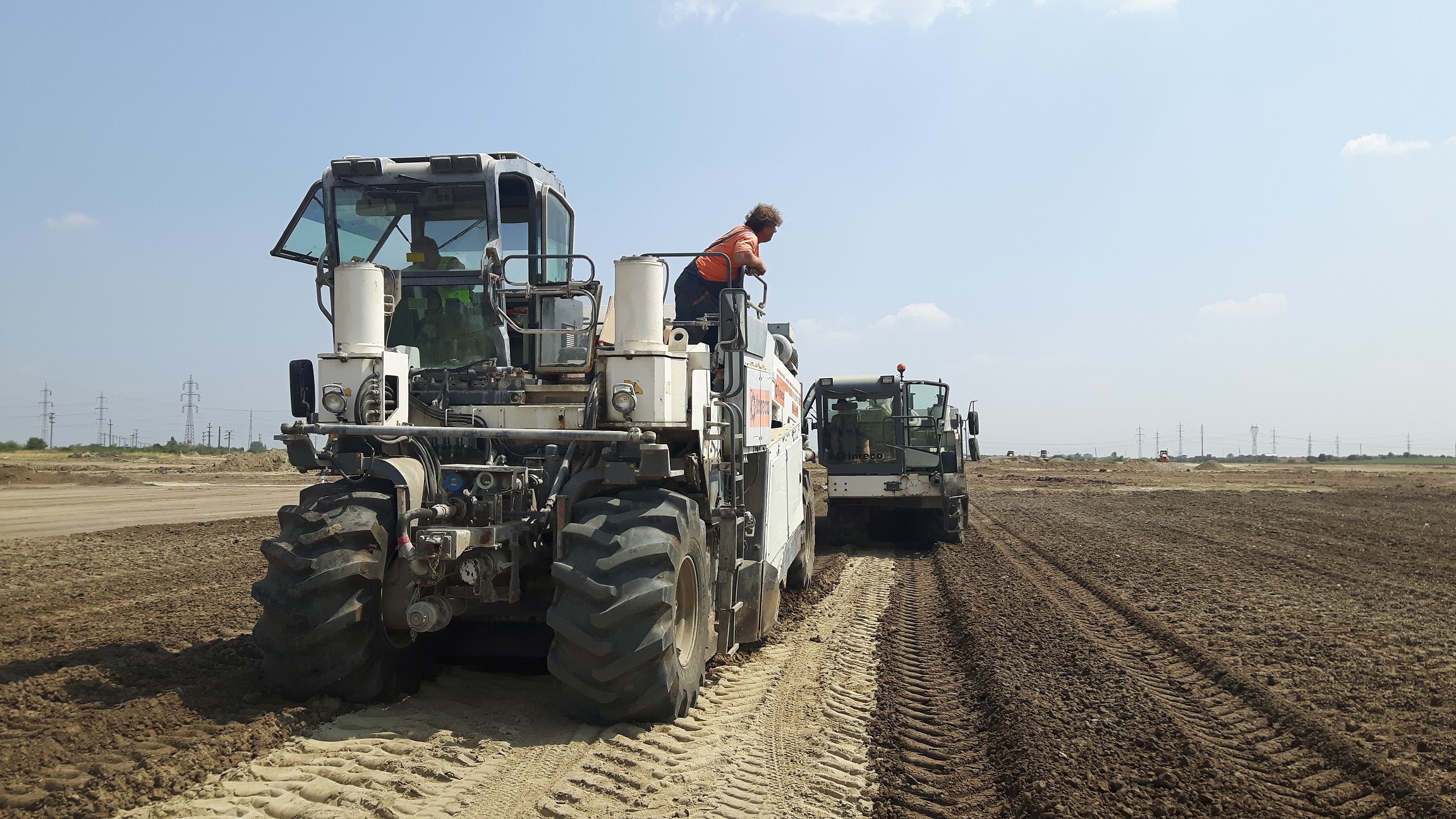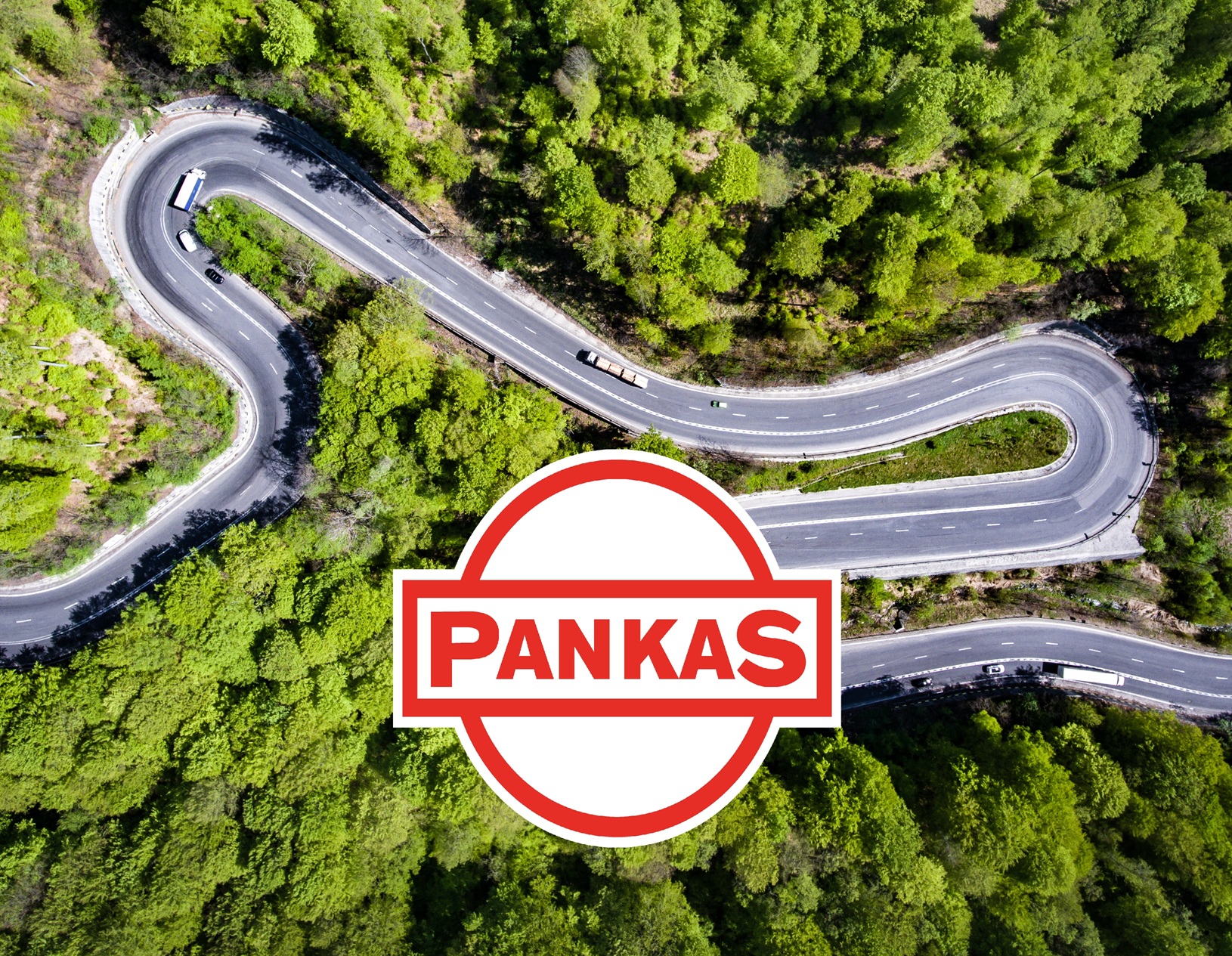Stabilized gravel with hydraulic binder or cement
For the execution of the road layers of the stabilized gravel as a foundation layer or a base layer, for all categories of roads, streets or parking places, natural aggregates (ballast, sand, gravel) are used - according to SR 662 - 2002, or crushed natural aggregates/ crushed stones - according to SR 667 - 2001. In case of the "in situ" stabilization technology, the stabilized ballast layer is executed by adding hydraulic binders or cement to this layer- according to STAS 10473 and SR EN 14227 standards.
Advantages of the technology:
• Costs savings with 20-30%
• Reduced execution time (4,000 – 6,000 m²/day)
• Increased reliability
• wide range of applications
• Environmental protection
Description of the execution procedure: Technical approval 004-07-1730-2022
The execution begins with the preparation of the surface supposed to be stabilized by checking the geometric elements, quality and the humidity of the material. The spreading of the cement or the hydraulic binder is carried out by a given percentage determined in a recipe. For this technology we are using a special spreading machine equipped with a hydraulic device which is adjustable to spread the exact amount of binder. The dosage is being carried out by an operator, and checks are made throughout the whole procedure. The actual “in situ” stabilized layer is carried out homogeneously and uniformly with a recycler, and depending on the humidity of the stabilized layer, the required amount of water is injected by the machine into the mixture.

